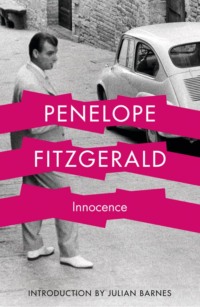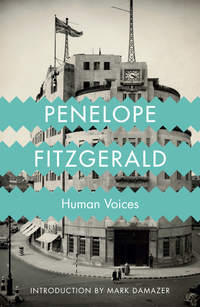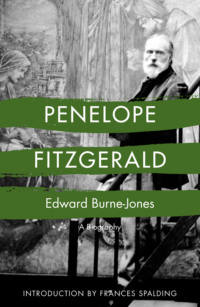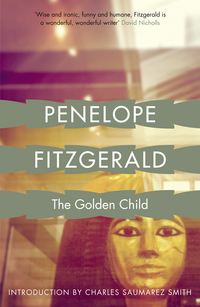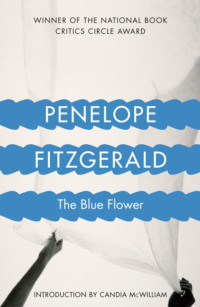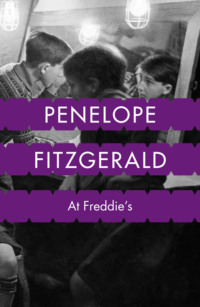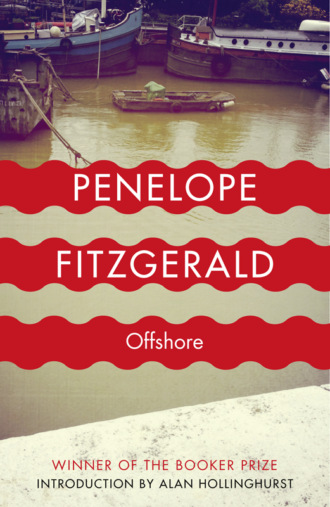
Полная версия
Offshore

Offshore
Penelope Fitzgerald

From the reviews of Offshore:
‘Perfectly balanced … the novelistic equivalent of a Turner watercolour.’
Washington Post
‘This is an astonishing book. Hardly more than 50,000 words, it is written with a manic economy that makes it seem even shorter, and with a tamped-down force that continually explodes in a series of exactly controlled detonations. Offshore is a marvellous achievement: strong, supple, humane, ripe, generous and graceful.’
Sunday Times
‘A novel of crisp originality, lucid and expressive with splendid bursts of satire.’
Observer
‘She writes the kind of fiction in which perfection is almost to be hoped for, unostentatious as true virtuosity can make it, its texture a pure pleasure.’
London Review of Books
Contents
Cover
Title Page
From the reviews of Offshore
Penelope Fitzgerald
Introduction
1
2
3
4
5
6
7
8
9
10
By the same author
Copyright
About the Publisher
Penelope Fitzgerald
Preface by Hermione Lee, Advisory Editor
When Penelope Fitzgerald unexpectedly won the Booker Prize with Offshore, in 1979, at the age of sixty-three, she said to her friends: ‘I knew I was an outsider.’ The people she wrote about in her novels and biographies were outsiders, too: misfits, romantic artists, hopeful failures, misunderstood lovers, orphans and oddities. She was drawn to unsettled characters who lived on the edges. She wrote about the vulnerable and the unprivileged, children, women trying to cope on their own, gentle, muddled, unsuccessful men. Her view of the world was that it divided into ‘exterminators’ and ‘exterminatees’. She would say: ‘I am drawn to people who seem to have been born defeated or even profoundly lost.’ She was a humorous writer with a tragic sense of life.
Outsiders in literature were close to her heart, too. She was fond of underrated, idiosyncratic writers with distinctive voices, like the novelist J. L. Carr, or Harold Monro of the Poetry Bookshop, or the remarkable and tragic poet Charlotte Mew. The publisher Virago’s enterprise of bringing neglected women writers back to life appealed to her, and under their imprint she championed the nineteenth-century novelist Margaret Oliphant. She enjoyed eccentrics like Stevie Smith. She liked writers, and people, who stood at an odd angle to the world. The child of an unusual, literary, middle-class English family, she inherited the Evangelical principles of her bishop grandfathers and the qualities of her Knox father and uncles: integrity, austerity, understatement, brilliance and a laconic, wry sense of humour.
She did not expect success, though she knew her own worth. Her writing career was not a usual one. She began publishing late in her life, around sixty, and in twenty years she published nine novels, three biographies and many essays and reviews. She her third novel, was a surprise to everyone. But, by the end of her life, she had been shortlisted for it several times, had won a number of other British prizes, was a well-known figure on the literary scene, and became famous, at eighty, with the publication of The Blue Flower and its winning, in the United States, the National Book Critics Circle Award.
Yet she always had a quiet reputation. She was a novelist with a passionate following of careful readers, not a big name. She wrote compact, subtle novels. They are funny, but they are also dark. They are eloquent and clear, but also elusive and indirect. They leave a great deal unsaid. Whether she was drawing on the experiences of her own life – working for the BBC in the Blitz, helping to make a go of a small-town Suffolk bookshop, living on a leaky barge on the Thames in the 1960s, teaching children at a stage-school – or, in her last four great novels, going back in time and sometimes out of England to historical periods which she evoked with astonishing authenticity – she created whole worlds with striking economy. Her books inhabit a small space, but seem, magically, to reach out beyond it.
After her death at eighty-three, in 2000, there might have been a danger of this extraordinary voice fading away into silence and neglect. But she has been kept from oblivion by her executors and her admirers. The posthumous publication of her stories, essays and letters is now being followed by a biography (Penelope Fitzgerald: A Life, by Hermione Lee, Chatto & Windus, 2013), and by these very welcome reissues of her work. The fine writers who have provided introductions to these new editions show what a distinguished following she has. I hope that many new readers will now discover, and fall in love with, the work of one of the most spellbinding English novelists of the twentieth century.
Introduction
‘Everything that you learn is useful,’ says the eleven-year-old Martha in Offshore. ‘Didn’t you know that everything you learn, and everything you suffer, will come in useful at some point in your life?’ Her little sister complains she is merely parroting the wisdom of their schoolteacher, Mother Ignatius, but Penelope Fitzgerald herself is surely standing close behind her. All Fitzgerald’s books are the product of maturity, reflection, the quickly touched depth of accumulated knowledge and long experience. Their creation reflects the new sense of opportunity that may come with the bereavements and displacements of later life. It was after her father, Edmund Knox, died in 1971 that she wrote her first book, a life of the artist Edward Burne-Jones, which came out in 1975, when Fitzgerald was fifty-nine. Her father himself became one of the subjects of her next book, the remarkable joint biography The Knox Brothers, published in 1977. Both these biographies draw on a lifelong exposure to, and reckoning with, the artistic, intellectual and spiritual life of the generations immediately before her own, made vital to her through her own extraordinary family. After this, Fitzgerald’s first extended fiction, The Golden Child, was written to entertain her husband Desmond before his death in 1976; the eight novels, the stories, the further biography and all the luminous journalism that followed were thus the work of a quarter-century of widowhood.
As a novelist Penelope Fitzgerald drew at first quite directly on her own life, discovering, in her late shift of circumstance and perspective, the potential for making distinctive art out of several earlier episodes in an often difficult and ramshackle career. Her period working in a Southwold bookshop had fed The Bookshop (1978), and in Offshore (1979) she turned to the years, her lowest and most difficult, living on an old Thames sailing barge on Battersea Reach; later, Human Voices (1980) would draw on her years of employment at the BBC during the war, and At Freddie’s (1982), her most exuberantly comic novel, on her time as a teacher at the Italia Conti stage school. Offshore too is at times very funny, though tonally it is the most mercurial of all her books. She herself called it a ‘tragi-farce’.
At its centre is a young Canadian woman, Nenna James, forced at last to accept that the English husband who has abandoned her and their two children will never come back to her. Nenna, who has unfulfilled artistic interests (she trained as a violinist), lives on a houseboat called Grace, just as Fitzgerald had done; but she has married much younger: she is thirty-two and her elder daughter eleven – a reminder and a warning that Fitzgerald, who was married at twenty-five, had three children, and lived on the Thames for two years in her mid-forties, reused her own life as freely and selectively as she liked. Flowing through and around Nenna’s story is a study of the people living alongside her on interconnected boats. In The Bookshop Fitzgerald had created a vulnerable female protagonist effectively starved of a history, and in a sparsely realised setting: it is a tale of Gothic exaggerations and simplicities. But already in Offshore you see her mature and concise ability to give whole lives in touches of discreet detail. The other boat owners – smart Richard Blake and his disenchanted landlubber wife, the all-too-accommodating rent boy Maurice, the old marine painter Sam Willis, who wants to sell his boat before it sinks – appear in a tableau in the opening scene, but their group portrait is constantly developing, since change and flux are the essence of the book, and Fitzgerald moves between the strands of her story with insouciant wit and ease. It is the novel in which she finds her form – her technique and her power. Her procedure, always prizing the ‘spare, subtle and economical’, is aptly at its most fluid in Offshore.
Fitzgerald professed herself drawn as a writer to ‘people who seem to have been born defeated or even profoundly lost … They are ready to assume the conditions the world imposes on them, but they don’t manage to submit to them, despite their courage and their best efforts … When I write it is to give these people a voice.’ In Offshore, her barge dwellers, ‘creatures neither of firm land nor water’ may aspire to the ‘sensible’ and ‘adequate’ conditions of life on the Chelsea shore. ‘But a certain failure, distressing to themselves, to be like other people, caused them to sink back, with so much else that drifted or was washed up, into the mud moorings of the great tideway.’ She wrote later that she regretted translations of her title that suggested ‘far from the shore’ – the point was the unsteady nature of the craft anchored mere yards away from the bank, and the ‘emotional restlessness of my characters, halfway between the need for security and the doubtful attraction of danger’.
All of course have their own reasons, and some manage better than others – Fitzgerald as ever has a keen understanding of the worried and hard-up. The novel’s astute psychological portraits show her clear but sympathetic grasp of their mental habits, the notions they have long depended on, but that will not save them in the end. Practical Richard, advising poor Willis about readying his boat for sale, can’t understand that he is ‘dealing with, or rather trying to help, a man who had never, either physically or emotionally, felt the need to replace anything’. Willis indeed ‘had come to doubt the value of all new beginnings and to put his trust in not much more than the art of hanging together’. (As it happens, a new beginning – or anyway a dramatic change – will be forced upon him.) Nenna is more alert to her own failures of reason, and submits to long imaginary hearings before a magistrate, in which her ideas of her marriage and its prospects are subjected to withering forensic scrutiny. Even affluent, efficient, honourable Richard, ‘the kind of man who has two clean handkerchiefs on him at half past three in the morning’, is touchingly shown as the victim of habits of mind bred in him by social and naval training: ‘This last reflection … seemed to tidy up the whole matter, which his mind now presented as a uniform interlocking structure, with working parts.’ Tragi-farce keeps them all in motion, its ambiguous terms never resolving into one or the other state. In a piece written ten years later Fitzgerald revealed that the original of Maurice, ‘an elegant young male model’ who lived on the boat next door, and had cheered up his weary and shabby middle-aged neighbour by taking her to Brighton for the day, had shortly afterwards gone back to Brighton and drowned himself. ‘But when I made him a character … I couldn’t bear to let him kill himself. That would have meant that he had failed in life, whereas, really, his kindness made him the very symbol of success in my eyes.’ Such private, fluctuating and unreconciled scales of value are at the heart of Fitzgerald’s depiction of human interaction.
And then there are the two little girls. Children in Fitzgerald’s fiction often show a disillusioned maturity lacking in their unhappy seniors. From the ten-year-old Christine Gipping in The Bookshop, who tells the childless widow Florence that ‘life has passed you by’, to the unflappable and ‘totally in charge’ twelve-year-old Dolly in The Beginning of Spring, they tend to be managers, speakers of truth and piercers of parental evasion. ‘They’re unusual kiddies,’ says Dolly’s visiting uncle; ‘I’m not sure that Nellie and me were ever permitted to join in quite as freely as that.’ The forebears of Fitzgerald’s fictional children can perhaps be found in the articulate nurseries and schoolrooms of Ivy Compton-Burnett, though to a friend who found them ‘precious’ Fitzgerald replied, ‘I don’t agree … They’re exactly like my own children, who always noticed everything.’ Even so, they can’t all be exactly like them, and they may owe something too to the self-possessed child actors whom Fitzgerald had taught, and whom she presents in At Freddie’s speaking whole paragraphs in dialect and shaping their brief careers with manic determination. Children, as she shows in Offshore, are inseparably both mimics and originals.
In Martha and Tilda, Fitzgerald wrote two of her most haunting and amusing juvenile roles. The only children in the book, they are also, as perpetual truants from school, her way of exploring its setting and its history. The six-year- old Tilda, whose whole world is the river, and who studies it knowingly from her perch atop Grace’s mast, passes long hours in a mingled daydream of past and present. Of course, anyone going down to Battersea Reach today will find a riverscape bewilderingly different from that Fitzgerald lived in fifty years ago, and at a further large remove from the late-Victorian Chelsea the children still catch glimpses of. High-rise council housing, glass ziggurats and sail-shaped condominiums crowd the river frontage, and the boats just upriver of Battersea Bridge where Grace had her mooring are now distinctly more prosperous. Here, though, through much of the nineteenth century, was Greaves’s Boatyard, and two generations of the Greaves family were boatmen – working notably for Turner, then for Whistler, who captured the old wooden Battersea Bridge from young Walter Greaves’s boat and taught him in turn to paint and etch the local river scenes in ways that mimicked his own. It is Whistler’s great nocturne, Blue and Gold: Old Battersea Bridge, the supreme transfiguration of this once scruffy part of the Thames, that Willis takes Tilda to see on their expedition to the Tate. ‘Whistler was a very good painter,’ he tells her, and his practical insight into the subject – ‘Tide on the turn, lighter taking advantage of the ebb’ – is typical too of Fitzgerald’s own expertise as a novelist, here not researched but learnt from every heave and creak of the boat in all the river’s seasons and moods. She is generally a wary lyricist, but the brief and precise observations of the tides and lights of the river in the novel are also perhaps her most painterly effects, especially the dusk, ‘darkness seeming to rise from the river’, and the dawn, ‘the river’s most elusive hour, when darkness lifts off darkness, and from one minute to another the shadows declare themselves as houses or as craft at anchor’.
The elusive glimpses back through the history of the river and its people are most memorably captured in the ‘bricking’ expedition of chapter 6, where Martha and Tilda trundle off over Battersea Bridge with their handcart to mudlark on the foreshore by Old St Mary’s Church. Here at low tide, by the wreck of a brick barge sunk before the war, they may sometimes still find ruby-red lustre tiles by William De Morgan – whose ‘very last pottery’, as Martha knows, ‘was at Sands End in Fulham’. These fabulous fragments plucked from the mud – a sinuous-tailed dragon, a ‘delicate grotesque silver bird’ – are trophies too from the world of William Morris and of Pre-Raphaelitism that Fitzgerald herself had so sensitively explored. In a piece on De Morgan written nearly twenty years later she recalled the artist’s sister-in-law Wilhelmina Stirling, a keeper of the flame who died in her hundredth year in 1965, a ‘valiant … even heroic’ figure, whom she (like Martha and Tilda after her) had visited at her Battersea house, where the ‘walls and recesses glowed with colour’. ‘Mrs Wilhelmina Stirling … ninety-seven if she’s a day,’ declares six-year-old Tilda, explaining her precocious knowledge and establishing their link across a century. The girls get £3 for their tiles, in a King’s Road antique shop, and go off to buy a Cliff Richard record with the proceeds.
Offshore is set in 1961 or ’62 (the internal evidence is inconsistent, as our memories of an epoch often are more than fifteen years later), so that when it was published in 1979 its present day was already a bygone period and mood. Heinrich, the well-connected Austrian teenager who comes to visit Grace and dazzles Martha, is keen to taste the excitement of the newly swinging city. She takes him off down the King’s Road, then in ‘its heyday … like a gypsy encampment … A paradise for children, a riot of misrule.’ Antique shops coexist with boutiques ‘breathing out incense and heavy soul’, and with coffee bars, ‘something new in London’, where ‘the shining Gaggia dispensed one-and-a-half inches of bitter froth into an earthenware cup, and for two shillings lovers could sit for many hours in the dark brown shadows, with a bowl of brown sugar between them.’ It’s a world ‘fated to last only a few years before the spell was broken’, and it is one that the older novelist acknowledges as the playground of her own children, by now of course grown-ups themselves. We see, very delicately touched in, the overlapping pattern of the generations, and feel that tension of latent change which always fascinated Fitzgerald, and bore such magnificent fruit in her late quartet of historical novels.
Alan Hollinghurst
2013
Конец ознакомительного фрагмента.
Текст предоставлен ООО «ЛитРес».
Прочитайте эту книгу целиком, купив полную легальную версию на ЛитРес.
Безопасно оплатить книгу можно банковской картой Visa, MasterCard, Maestro, со счета мобильного телефона, с платежного терминала, в салоне МТС или Связной, через PayPal, WebMoney, Яндекс.Деньги, QIWI Кошелек, бонусными картами или другим удобным Вам способом.



